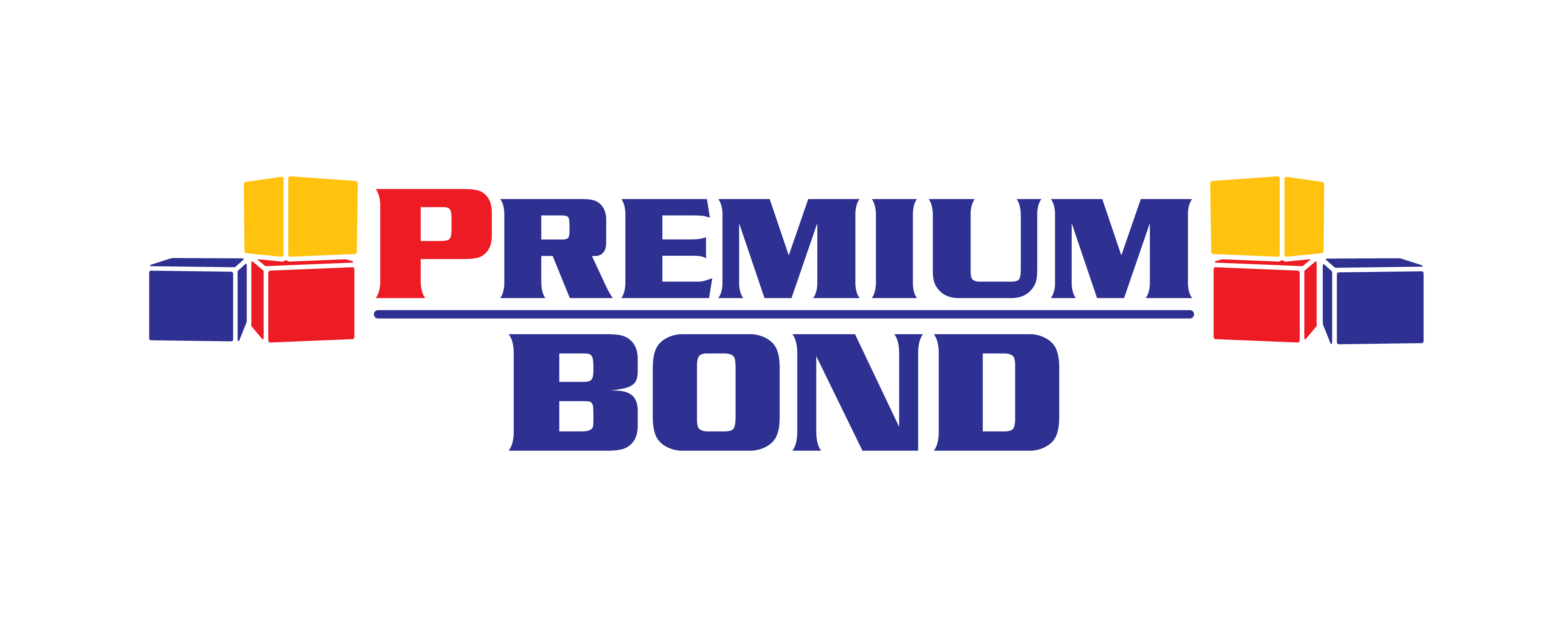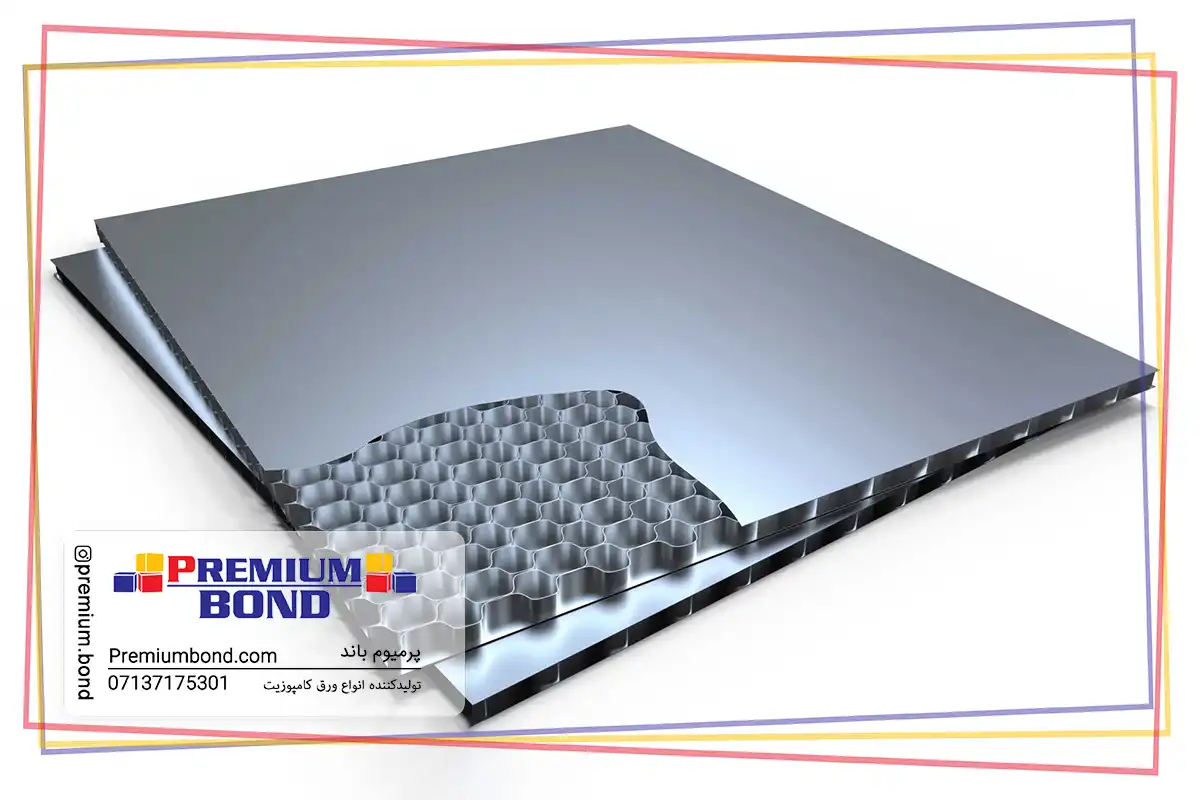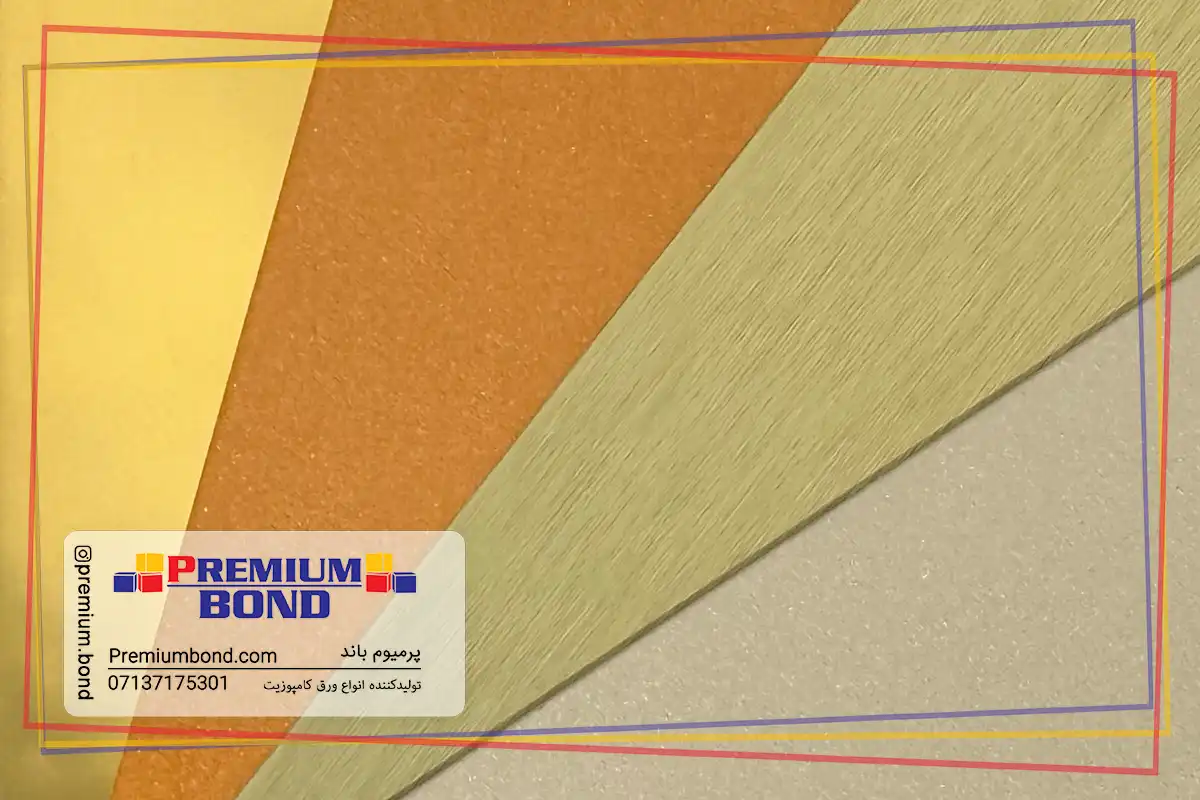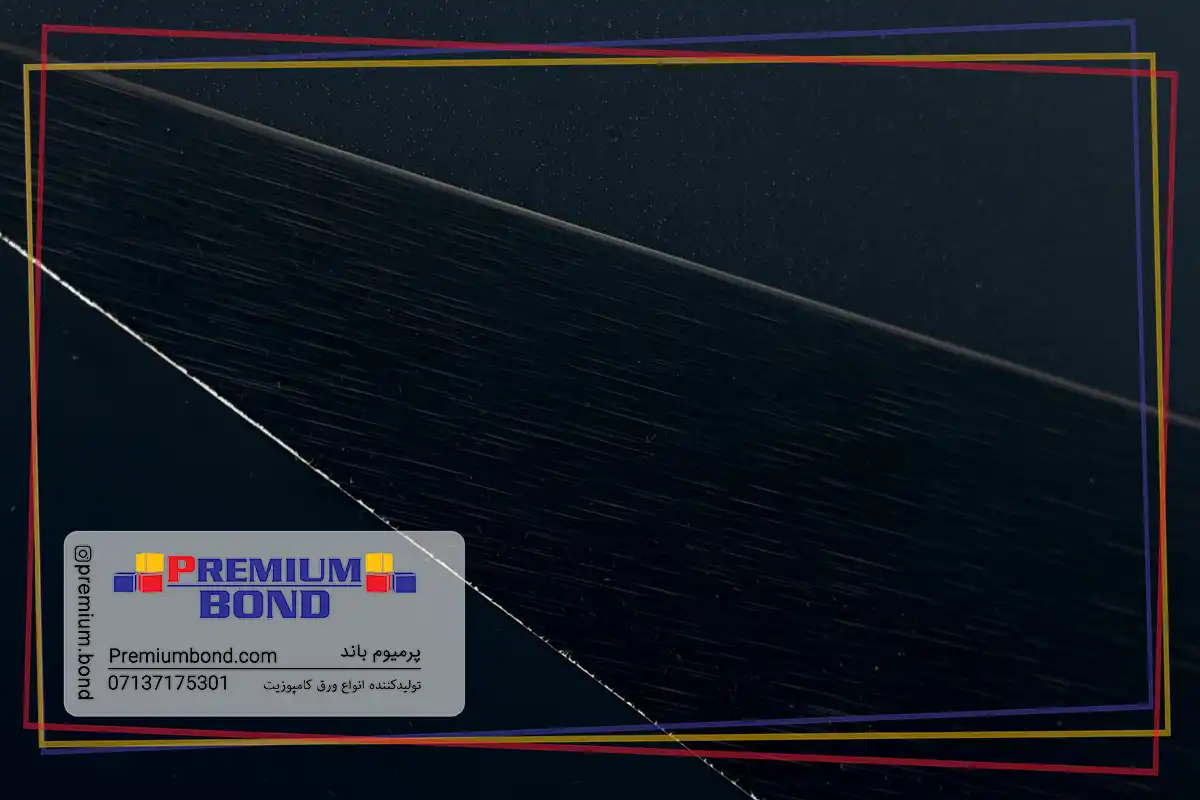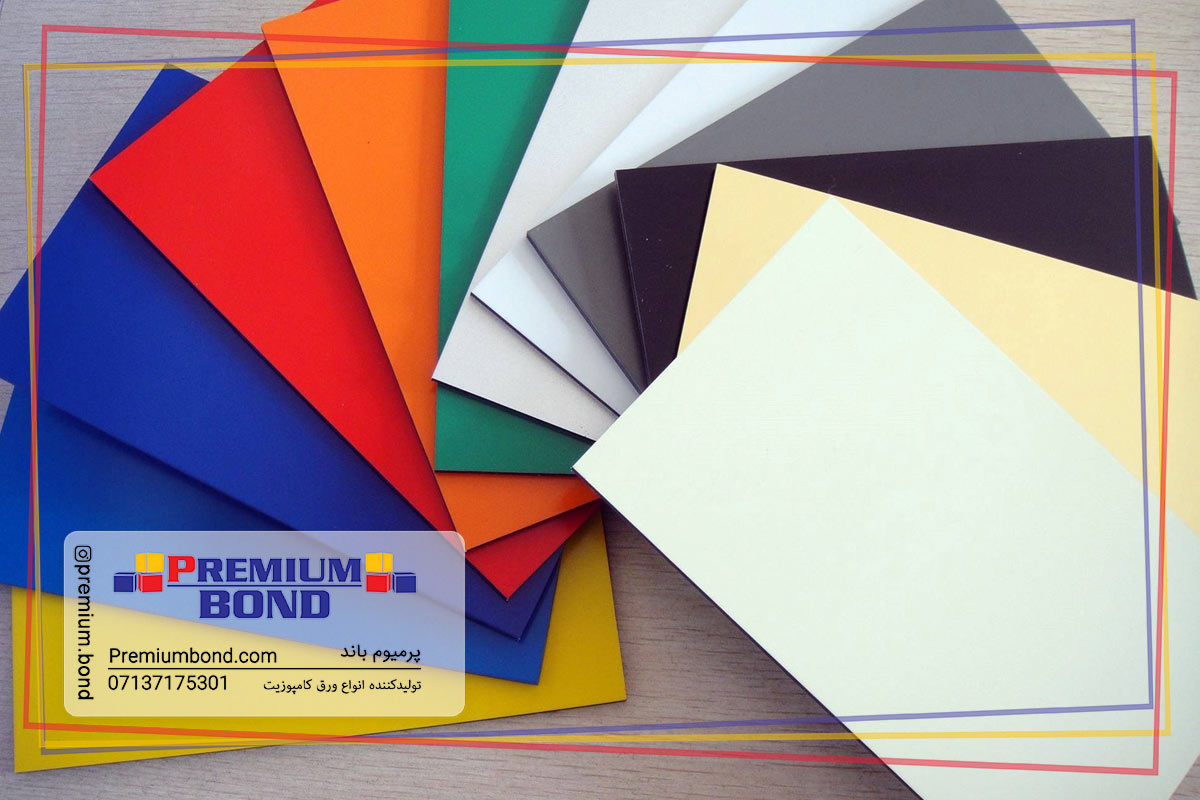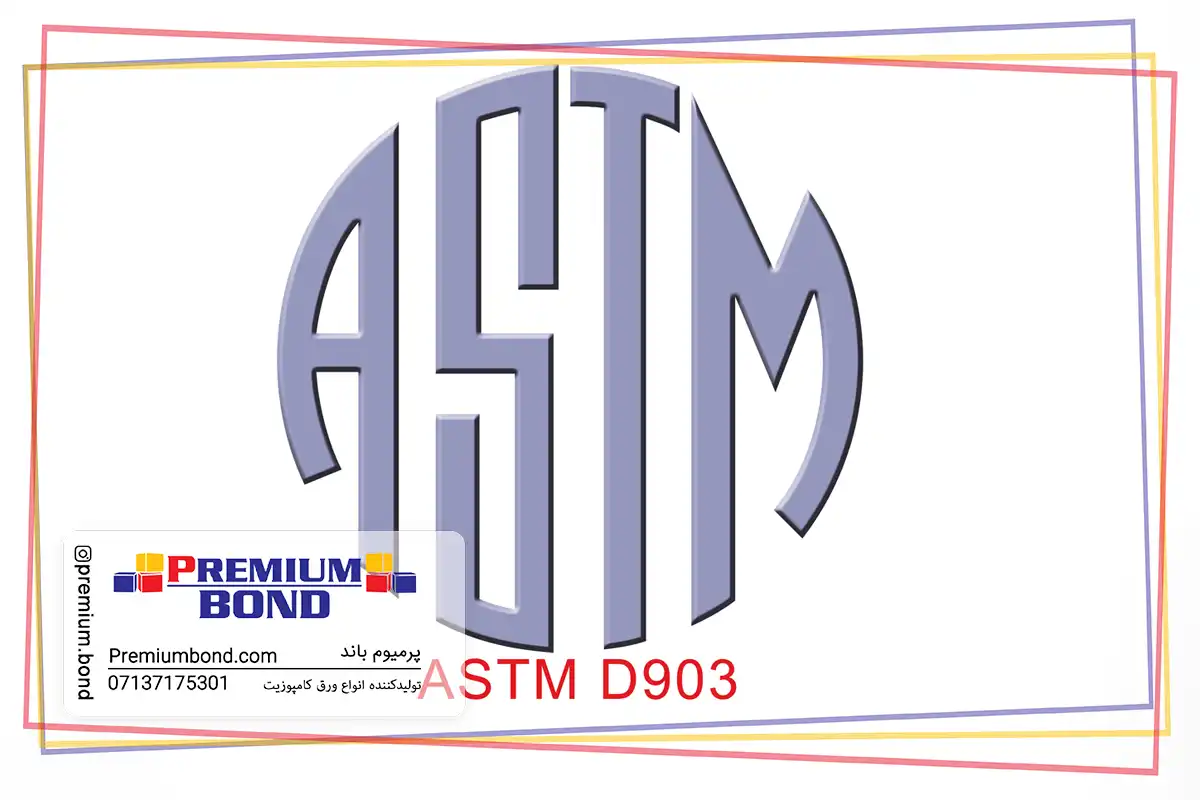Have you come across various composite sheet terms in the construction industry and wondered about their definitions or uses? Understanding ACP terminology is essential for making informed decisions in façade selection and installation. In this article, we provide a clear and concise composite panel glossary covering the most important terms.
Basic Terms and Structure
In this section, we define the key terms and main structure of composite panels, following widely accepted definitions found in any comprehensive composite panel glossary, for better understanding.
۱- Composite Panel
A composite panel is a multi-layered product, typically composed of two outer metallic layers and a non-metallic core. This combination provides the panel with unique properties that cannot be achieved using single-component materials.
۲- ACM (Aluminum Composite Material)
ACM is a widely used type of composite panel consisting of the following layers:
The materials that make up a composite panel include:
- Two aluminum layers:
Each layer typically has a thickness between 0.3 and 0.5 mm.
- Polymer core:
Usually with a thickness ranging from 2 to 5 mm, the core keeps the panel lightweight while enhancing its overall strength.
۳- MCM (Metal Composite Material)
MCM is a more general term that refers to all composite systems which use various metals as their external layers. This can include aluminum, stainless steel, copper, or even titanium.
Terms like MCM and ACM are commonly featured in any detailed composite panel glossary, as distinguishing between these categories is critical for correct material specification.
۴- Core
The core is the middle layer of a composite panel and plays a crucial role in determining the panel’s physical and mechanical properties.
Common types of cores include:
- Polyethylene (PE) Core: Lightweight and economical, but has low heat resistance.
- Fire-Resistant (FR) Core: Contains mineral fillers that increase the panel’s resistance to fire.
- Low-Density Polyethylene (LDPE) Core: Offers greater flexibility compared to regular polyethylene.
- Mineral Core: Provides high heat resistance and is especially suitable for use in high-rise buildings.
Understanding ACP terminology such as FR core, PE core, and LDPE core is important for proper product selection and compliance with safety standards.
۵- Skin
The skin refers to the outer layers of a composite panel. The characteristics of these layers (such as thickness, alloy composition and surface coating) directly affect the panel’s performance and its final appearance.
The core, skins and coatings are key components often mentioned in specifications and datasheets. These elements are fundamental composite sheet terms that every professional should be familiar with.
Physical and Mechanical Properties
Understanding core composite sheet terms is essential for accurately evaluating the physical and mechanical characteristics of modern panels. Familiarity with these terms ensures that professionals can select materials that best meet the structural and performance requirements of each project. Composite panels have several important physical and mechanical properties, including:
۱- Modulus of Elasticity
The modulus of elasticity (E) indicates the stiffness and resistance of the panel against elastic deformation. For ACM, this value varies and depends on the exact composition of the materials.
۲- Flexural Strength
Flexural strength represents the ability of a composite panel to resist bending forces applied perpendicular to its surface. This property is measured using a three-point bending test, according to ASTM D790 standard. For aluminum composite panels (ACM), the flexural strength typically ranges from 80 to 130 megapascals (MPa).
۳- Coefficient of Thermal Expansion
The coefficient of thermal expansion (α) indicates how much the dimensions of the panel change in response to temperature variations. For aluminum composite panels (ACM), this value is typically around 2.4 mm per meter (m) for every 100 °C change in temperature. Designers need to take this factor into account when calculating expansion joints and designing panel connections.
Installation and Execution
The installation and implementation of composite panels typically involve the following:
۱- Dry Facade System
This is a method for installing composite panels without the use of mortar or adhesive. The system consists of a metal substructure and mechanical fasteners, which also allow for ventilation behind the panels. For comprehensive information about installing composite panels, you can refer to the article on How to Install and Execute Composite Panel Facades.
۲- Substructure
The substructure is a metal framework, usually made of aluminum, used to install composite panels. It must be able to support the weight of the panels and resist wind loads, while also allowing for thermal expansion and contraction.
۳- Clip
The clip is a metal component used to attach the composite panel to the substructure. It must be made of a material compatible with the metal surface of the panel to minimize the risk of galvanic corrosion.
۴- Expansion Joint
The expansion joint is a gap provided between panels to accommodate expansion and contraction caused by temperature changes. The width of the joint should be determined based on the thermal expansion coefficient of the materials and the range of ambient temperature fluctuations.
۵- Concealed Fixing
Concealed fixing is an installation system in which the fasteners are not visible from the exterior. This method involves the use of special clips or rear fastening systems behind the panel. Professionals familiar with ACP terminology are better equipped to select the most appropriate installation system for each project.
Performance and Specialized Properties
The following terms relate to the performance and specialized properties of composite panels:
۱- Wind Load Resistance
This property indicates the extent to which a composite panel can withstand pressure and forces generated by wind. It is typically evaluated through tests conducted according to standards such as ASTM E330, which determine the panel’s capacity to resist wind-induced loads.
۲- Thermal Insulation
The composite panel acts as a thermal insulator by reducing heat transfer. Its thermal conductivity coefficient generally ranges from 0.15 to 0.3, depending on the type of core material.
۳- Sound Insulation
The composite panel serves as a sound insulator by limiting sound transmission. The sound insulation performance is measured by the Rw index, which for these panels is typically between 25 and 35 decibels.
۴- UV Resistance
Good resistance to ultraviolet (UV) radiation helps the composite panel maintain its color and appearance when exposed to sunlight. This property mainly depends on the type of surface coating, such as PVDF, and the presence of UV-resistant additives in the paint.
Coatings and Finishes
Coatings and finishes play an important role in the final appearance and surface protection of composite panels. The following presents the main types of finishes, as well as key practical points:
۱- PVDF (Polyvinylidene Fluoride)
PVDF is a durable coating that is most commonly used in paint formulas containing 70% PVDF and 30% acrylic resin. This coating provides high resistance to ultraviolet (UV) light and chemicals.
۲- FEVE (Fluoroethylene Vinyl Ether)
FEVE is a fluoropolymer coating with high durability, similar to PVDF. However, it creates a glossier surface and makes it possible to produce panels in a wider variety of colors.
۳- Anodized Finish
An anodized finish is created by an electrochemical process that builds up a protective oxide layer on the aluminum surface. This layer increases the aluminum’s resistance to corrosion and scratching.
۴- Metallic Finish
A metallic finish is achieved by incorporating metallic particles into the paint, resulting in a panel with a shiny, metal-like appearance. For a comprehensive understanding of different finish types, it is recommended to consult entries related to coatings in a composite panel glossary. Mastery of these terms helps ensure the desired aesthetic and performance for each project.
Standards and Specialized Tests
Some of the key standards and specialized tests for composite panels include:
۱- NFPA 285
An American standard for evaluating the fire resistance of exterior walls on high-rise buildings. This test simulates the spread of fire on the building façade.
۲- BS 8414
A British standard used to assess the fire performance of building façades. This test measures flame spread and the temperature of gases released during a fire.
۳- ASTM D1781
A standard used to test the bond strength between the layers of a composite panel, also known as the Drum Peel Test.
۴- AAMA 2605
A standard for evaluating the quality and durability of high-performance coatings on aluminum extrusions and panels, established by the American Architectural Manufacturers Association.
Many of these test methods and standards are commonly referenced within ACP terminology, highlighting their crucial role in ensuring product safety and performance.
Advanced Fabrication and Installation Techniques
The ongoing development of advanced fabrication and installation methods has expanded the technical vocabulary associated with composite panels, introducing new composite sheet terms relevant to façade engineering. These techniques enable designers and fabricators to achieve greater precision, structural integrity, and design flexibility. Some of the most prominent advanced techniques include:
۱- Routing
Routing involves creating grooves on the back of the composite panel, allowing it to be bent easily. This method is mainly used to form sharp edges and corners, and usually does not require additional parts or fasteners.
۲- CNC Milling
In CNC milling, composite panels are precisely cut using advanced, computer-controlled machines. This method makes it easy to create intricate and complex designs with high accuracy.
۳- Cassette Panel System
In the cassette panel system, the edges of the composite panel are bent inward to create a box-shaped panel. This system provides greater strength compared to flat panels and allows for faster, easier installation.
Main advantages of this system include:
- Higher panel strength and rigidity
- Faster installation, as connections are pre-fabricated in the factory
- Better insulation and improved protection against water and air infiltration
۴- Tension-leveling Installation System
With this approach, composite panels are installed and fixed using pre-stressed steel cables. This system allows for the construction of large and seamless facades, and also increases the resistance of the facade against wind pressure.
۵- Structural Adhesive Bonding
In this method, advanced high-strength adhesives are used to attach composite panels to the substructure. Compared to mechanical fasteners, this technology offers several advantages, including:
- More even distribution of pressure and stress across the bonding surface
- Reduced overall weight of the building façade
- Improved thermal and acoustic insulation
- Ability to join dissimilar materials without concern for galvanic corrosion
Structural Calculations and Design
Structural calculations and design involve key considerations that are essential for selecting the right composite panels. The following points are particularly important:
۱- Finite Element Analysis (FEA)
A numerical method used to simulate the behavior of composite panels under various loads.
In façade design, FEA is used for:
- Predicting panel deflection under wind loads
- Analyzing thermal stresses caused by temperature changes
- Optimizing the design of fasteners and substructures for improved performance
۲- Wind Load Calculations
In this process, the forces exerted by wind on the building façade are calculated using standards such as ASCE 7 (USA) or Eurocode 1 (Europe). These calculations include:
- Determining wind pressure based on the building’s geographic location and height
- Calculating wind pressure on different façade areas, such as corners, edges, and central zones
- Identifying the suction and compression loads applied to the panels
۳- Expansion Joint Design
When determining the appropriate width and spacing of expansion joints, several key factors must be considered:
- The coefficient of thermal expansion of the materials (α)
- The expected range of ambient temperature changes (ΔT)
- The length of the panels (L)
The general formula for calculating thermal expansion is:
ΔL = α × L × ΔT
Thermal Performance and Energy Efficiency
Composite panels play a crucial role in reducing energy consumption and enhancing the thermal performance of buildings. Evaluating these properties is essential for improving overall building efficiency.
۱- R-Value
The R-value represents the thermal resistance of a material. For composite panels, this value depends on the type of core material and its thickness. For example, an aluminum composite panel with a polyethylene core and a thickness of 4 mm typically has an R-value of approximately 0.29 m²·K/W (square meter kelvin per watt).
۲- Thermal Bridge
A thermal bridge refers to areas of the façade that have significantly higher heat transfer compared to surrounding sections. In composite façades, metal fasteners and connections are the primary sources of thermal bridging. To minimize thermal bridges, the following strategies can be implemented:
- Adding thermal insulation at connection points
- Designing the installation system to minimize direct metal-to-metal contact as much as possible
۳- Thermal Performance Simulation
To analyze and improve the thermal behavior of composite façades, specialized software such as THERM or WUFI is used. These simulations help designers optimize the building envelope and reduce overall energy consumption.
Terms such as thermal bridge and R-value are also key components of ACP terminology, helping designers improve energy efficiency.
Durability and Maintenance
Effective maintenance and durability assessments of composite panels rely heavily on understanding specialized composite sheet terms frequently found in technical manuals and datasheets. Familiarity with this technical vocabulary is essential for correctly interpreting test results and maintenance protocols. This section introduces some of the key tests and indicators commonly used to evaluate the durability and maintainability of composite panels:
۱- Thermal Cycling Test
In this test, the resistance and durability of composite panels and their connections are evaluated under repeated temperature fluctuations. Panels are typically subjected to thousands of heating and cooling cycles, following standards such as AAMA 501.5.
۲- Corrosion Resistance
This section evaluates the capability of composite panels to withstand harsh environmental conditions. Common tests include:
- Salt Spray Test (ASTM B117)
- Humidity Resistance Test (ASTM D2247)
۳- Facade Cleaning Systems
For the regular maintenance and cleaning of façades, dedicated systems must be designed and implemented to provide safe and convenient access to all building surfaces. These systems may include:
- Gondola systems or Building Maintenance Units (BMU)
- Dedicated anchor points for suspended scaffolding
- Foldable platforms integrated with the façade
Recent Innovations in the Composite Panel Industry
Recent innovations in the composite panel industry are shaping the future of building materials and façade design. The evolving nature of the field continuously updates the composite panel glossary, as new advancements and technologies introduce previously unfamiliar terms and definitions. Some of the most important recent innovations include:
۱- Building-Integrated Photovoltaics (BIPV):
In this technology, photovoltaic (solar) cells are seamlessly integrated with composite panels, allowing the building façade to generate electricity in addition to providing aesthetic appeal. This approach enables the creation of modern, multifunctional façades.
۲- Phase Change Materials (PCMs)
Incorporating phase change materials into the core of composite panels significantly enhances the thermal performance of façades. These materials absorb or release heat at a constant temperature, helping maintain stable indoor temperatures and improving energy efficiency.
۳- Self-Cleaning Coatings
Nano-technology-based self-cleaning coatings are applied to composite panels to keep the façade surfaces clean with minimal maintenance. There are typically two main types:
- Photocatalytic Coatings: Made with titanium dioxide, these coatings utilize sunlight to break down organic pollutants and dirt on the panel surface.
- Superhydrophobic Coatings: These coatings cause water droplets to roll off quickly, picking up dust and contaminants as they move, thus keeping the surface clean.
Why Is Familiarity with Composite Panel Terminology Important?
A strong understanding of composite sheet terms is essential for professionals aiming to optimize construction projects. When architects and engineers are familiar with the latest ACP terminology and keep up with the evolving composite panel glossary, they can make smarter decisions regarding the design and installation of contemporary façades. This expertise not only helps in maximizing the advantages of composite materials but also leads to the creation of buildings that are more resilient, aesthetically pleasing, and energy-efficient.
